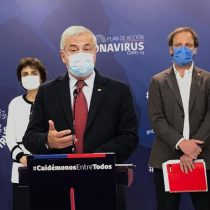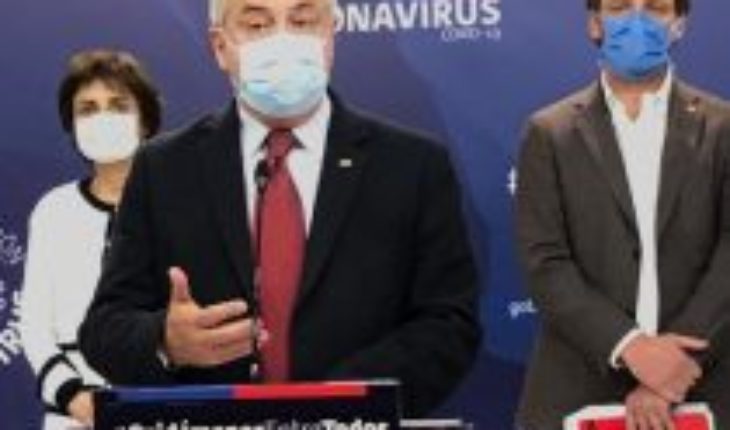
During the last week COVID-19 contagions have remained on the rise, with more than 2,600 cases per day, more than 2,000 of them in the Metropolitan Region. The ICU bed network exceeded 90% of its national capacity, and MRI is at full capacity and have already begun to move Coronavirus patients to regions to be connected to respirators. In addition, the suspension of PCR sampling in some private clinics is added, pending the Delivery of the Minsal kit PCR, and the lack of reagents to be able to process PCR tests in MRI laboratories, due to the stock breakdown of the roche company, one of the main suppliers of the laboratory network in Chile.
As part of this shortage of inputs to diagnose Coronavirus cases, other countries opted to use other diagnostic formulas such as chest scans and blood tests, which identify the circulation of antibodies for COVID-19 in the blood, until, at times of increased saturation of the hospital network, in China it was chosen to diagnose based on symptoms.
All of these formulas depend on the definition of “suspicious case for epidemiological surveillance of COVID-19 outbreak”, which must be instructed by the Minsal to health facilities by means of an “order” from the Department of Epidemiology. The definition of “suspicious case” has not been officially amended since 23 March by Minsal, despite the fact that on 27 April Minister Jaime Mañalich announced that the Advisory Council recommended broadening the definition and that it would be taken into account.
The ordinary decree B51 No. 933 of the Minsal was published on 23 March, and is signed by undersecretaries Paula Daza and Arturo Zúñiga. There it is established as suspicious cases to: travelers with fever or symptoms of respiratory disease, to people with “any acute respiratory disease” who was in contact with a person diagnosed or suspected of COVID-19; people with acute respiratory disease, who have a fever of about 37.8 degrees and have odinophagia, cough, dyspnoea or myalgia. And finally it includes patients with severe respiratory disease who needs hospitalization. On the other hand, it includes as a “probable case” one who has an “inconclusive” PCR test and as a “confirmed case to the one that is “positive” for the COVID-19-specific test.
On 27 April, Minister Jaime Mañalich reported that the Minsal Advisory Council suggested extending the definition of suspicious cases, “and we will adopt it in the Ministry of Health, given the authority of this Council,” the minister said. He explained that according to the Council, any person presenting:
“Fever or axillary temperature greater than 37.8o, without other obvious cause – which does not have a urinary tract infection, does not have an abscess- and/or has symptoms suggestive of a respiratory infection, such as muscle aches, sore throat, cough, respiratory apremium – we call it imnea-, chest pain, prostration, decay, cyanosis -which is lack of oxygen, bluish color of the ears, fingers -, diarrhea -very important -, and a rushed breathing. Or, three, acute alteration of the sense of smell or taste, which is already established as a relevant symptom,” Mañalich said.
The head of the health portfolio added that the Council also called for the broadening of the confirmed case definition, “sorry to extend me, but this is of radical importance to our understanding of the disease,” the minister told the press.
The Advisory Council requested that it be understood as a “confirmed case for COVID-19”, “first a person who has the symptoms we have identified and who has a positive PCR test for Sars Cov 2, first condition. Secondly as an option, suspicious case that has characteristic images in the chest scanner, therefore, valid a radiological image – which are already standardized – as a proven positive case. Thirdly, a case with the symptoms that we have already pointed out and that has a serological test in the blood, for igg and / or IGM, positive”, explained Mañalich.
Within the health care network there is concern about the lack of updating of the definition of “suspicious case”, since it is based on this criterion that it is determined to whom to apply the PCR Test or not, in addition to the lack of reagents and PCR Kit, “validating the diagnosis through scanner is essential”, they note.
Through her Twitter account, the president of the Medical College, Izkia Siche noted: “The delay of the new case definition is unpresentable. @ministeriosalud announced it on April 27.” Furthermore, on 10 May the Minsal Advisory Council reiterated the need to update the definition for suspicious cases. “In the face of the possible lack of inputs to make the PCRs, it is necessary to instruct the health services and the primary care network so that, if they do not have them, they indicate the isolation of cases and quarantine of contacts based on clinical-epidemiological criteria. In the face of a suspicious symptomatic case, indicate their isolation, and the identification and quarantine of their contacts up to 14 days from the onset of symptoms or from contact. Where the examination is available, review the indications based on the results and clinical evolution of suspected cases and their contacts,” they highlight in their last minutes of recommendations.
This afternoon, in an interview with CNN Chile, Miguel O’Ryan, member of the Advisory Board for COVID-19 noted that The Minsal will be recommended to “expand the diagnosis of suspicious case without a test, keeping quarantine for two weeks”, which was highlighted on the Ministry’s Twitter account.
Until the closing of this note on the Minsal page remains as an official document for phase 4 of Coronavirus, the definition of suspicious case on March 23.





